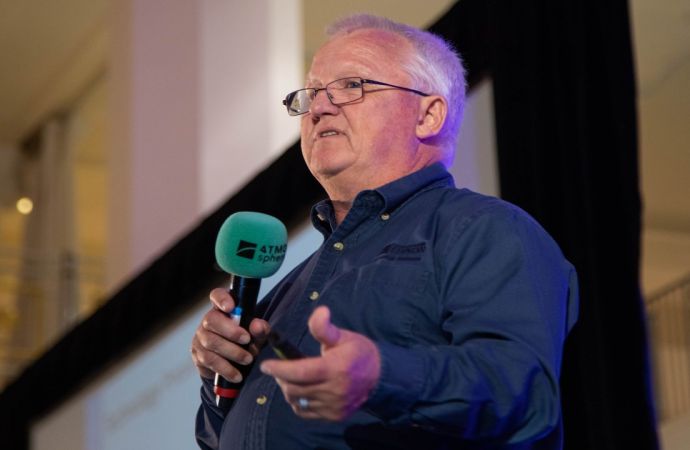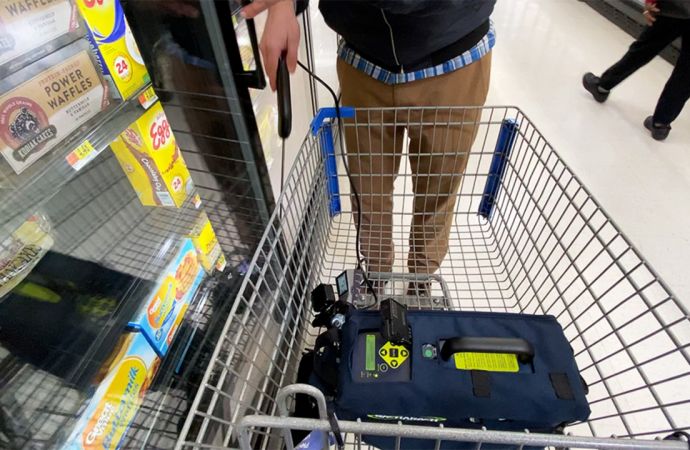French safety regulations so far have been unfairly restrictive towards refrigeration systems using ammonia. The French National Union of Refrigerated Warehouses (Union Syndicale Nationale des Exploitations Frigorifiques, USNEF) has invested years investigating the safety of ammonia refrigeration and has finally succeeded in convincing the authorities that the regulation needed to be changed.

The French safety regulations applicable to small and average (150 kg to 1 500 kg) systems using ammonia have until recently been a legal barrier, practically making the use of ammonia as a refrigerant almost impossible. The regulations dating back to 1998 imposed arbitrary safety conditions such as a minimum distances of 50 meters between an ammonia system and the border of a neighbor property. The resulting needs for vast areas around the ammonia system (approximately one hectar around a simple point) were costly and hard to fulfill by business operators.
Ammonia as refrigerant
Ammonia as a refrigerant is, however, the only refrigerant with no climate-damaging effect. Its ozone depleting potential (ODP) as well as its global warming potential (GWP) are equal to zero while its thermodynamic properties are excellent and allow freezing at very low temperatures (-18°C/-25°C) while being energy efficient.
These are not new findings. Ammonia has a long history in refrigeration and offers the additional advantage of being cheap. The French administration justified its very restrictive legislation by referring to ammonia's toxicity. However, if proper and strict safety regulations are observed, ammonia systems are just as safe as any other refrigeration system (maybe even more so as ammonia’s very distinctive smell provides extremely early warning of leakage, which is not true for other refrigerants).
Ammonia replacing HCFCs
The Montreal Protocol prescribes the phase-out of the chemical refrigerants HCFC, starting with the prohibition of production of this substance from 1 January 2010 in developed countries. The substance will be completely banned by 2020. The developing countries will follow suite with the prohibition of new HCFCs from 2020 on and their total phase-out by 2040.
Until December 2009, replacing HCFCs by ammonia in refrigerated warehouses in France was blocked for unnecessary administrative reasons which were additional to any technical and economic burdens. French regulation on the use of HCFCs has no mention of a minimum distance between the plant and the borderline of the property. Existing HCFC plants could therefore not comply with this demand when being converted to ammonia.
The present change of regulations has remedied to that. Whether or not to replace a HCFC refrigerant with ammonia or use the natural refrigerant from the beginning has to be decided on a case by case basis, depending on technical and economic conditions. But ammonia certainly is highly energy-efficient and benign for the environment.
The new French ammonia regulation
The new regulation implements stricter safety requirements for building the machinery room ( to the European standard EN 378) as well as for the piping and the condensers located outside the refrigerated warehouse. The size of high pressure ammonia containers is limited, a mandatory height of rejection points is specified and leakage detection systems are also prescribed. Minimum distances are subsequently reduced, making the use of ammonia refrigeration systems easier.
Along with this new regulation, it is now important that the consulting firms advising cold stores become more familiar with and less weary of ammonia so that they can offer sound advice on a full spectrum of alternatives to HCFCs instead of considering only short term solutions such as HFCs.
Ammonia as refrigerant
Ammonia as a refrigerant is, however, the only refrigerant with no climate-damaging effect. Its ozone depleting potential (ODP) as well as its global warming potential (GWP) are equal to zero while its thermodynamic properties are excellent and allow freezing at very low temperatures (-18°C/-25°C) while being energy efficient.
These are not new findings. Ammonia has a long history in refrigeration and offers the additional advantage of being cheap. The French administration justified its very restrictive legislation by referring to ammonia's toxicity. However, if proper and strict safety regulations are observed, ammonia systems are just as safe as any other refrigeration system (maybe even more so as ammonia’s very distinctive smell provides extremely early warning of leakage, which is not true for other refrigerants).
Ammonia replacing HCFCs
The Montreal Protocol prescribes the phase-out of the chemical refrigerants HCFC, starting with the prohibition of production of this substance from 1 January 2010 in developed countries. The substance will be completely banned by 2020. The developing countries will follow suite with the prohibition of new HCFCs from 2020 on and their total phase-out by 2040.
Until December 2009, replacing HCFCs by ammonia in refrigerated warehouses in France was blocked for unnecessary administrative reasons which were additional to any technical and economic burdens. French regulation on the use of HCFCs has no mention of a minimum distance between the plant and the borderline of the property. Existing HCFC plants could therefore not comply with this demand when being converted to ammonia.
The present change of regulations has remedied to that. Whether or not to replace a HCFC refrigerant with ammonia or use the natural refrigerant from the beginning has to be decided on a case by case basis, depending on technical and economic conditions. But ammonia certainly is highly energy-efficient and benign for the environment.
The new French ammonia regulation
The new regulation implements stricter safety requirements for building the machinery room ( to the European standard EN 378) as well as for the piping and the condensers located outside the refrigerated warehouse. The size of high pressure ammonia containers is limited, a mandatory height of rejection points is specified and leakage detection systems are also prescribed. Minimum distances are subsequently reduced, making the use of ammonia refrigeration systems easier.
Along with this new regulation, it is now important that the consulting firms advising cold stores become more familiar with and less weary of ammonia so that they can offer sound advice on a full spectrum of alternatives to HCFCs instead of considering only short term solutions such as HFCs.
MORE INFORMATION
Related stories








